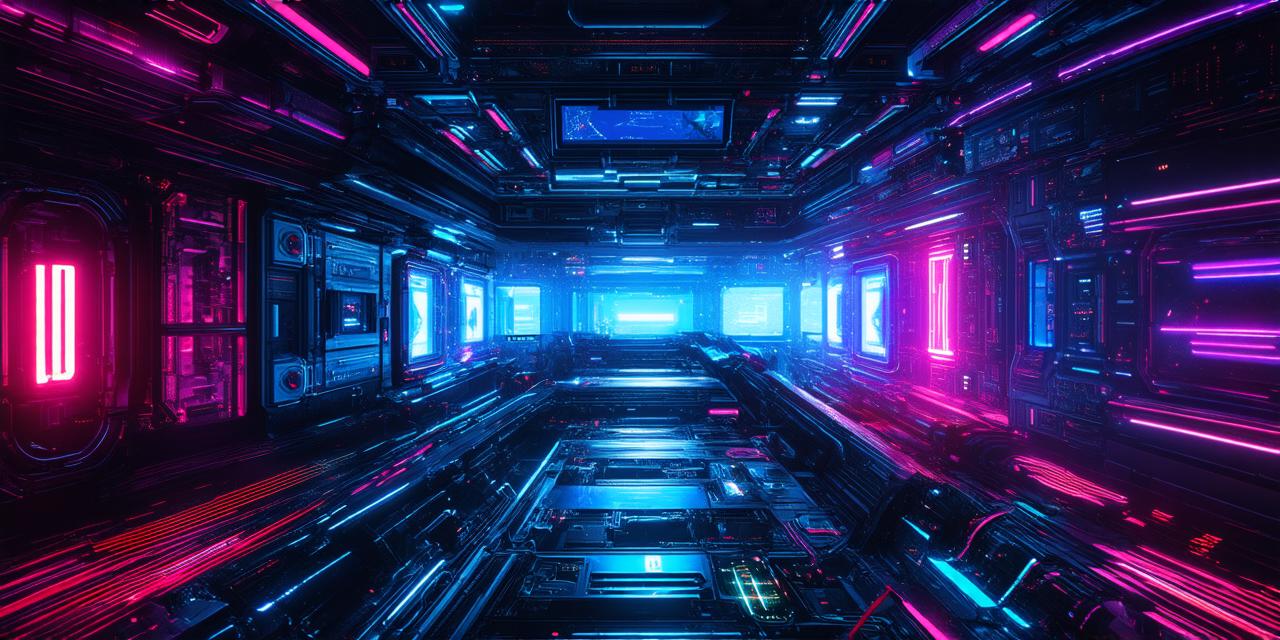Virtual reality (VR) is a technology that allows users to experience an immersive 3D environment using specialized headsets and sensors. In the context of computer graphics, VR has revolutionized the way we create and interact with digital content.
One of the key advantages of VR in computer graphics is its ability to provide a truly immersive experience. By placing users directly into a 3D space, VR allows them to feel like they are actually present within that environment. This can be especially useful in industries such as gaming and entertainment, where creating a fully immersive experience is critical to engaging the user.
Another advantage of VR in computer graphics is its ability to provide realistic interaction with virtual objects. With advanced tracking systems, users can interact with virtual objects using their hands, body, or even eyes, providing a more natural and intuitive way to engage with digital content.
To understand the impact of VR on computer graphics, it’s important to examine some real-life examples. One such example is the use of VR in medical training. By simulating surgical procedures in a virtual environment, medical students can practice their skills without risking patient harm. This not only improves their ability to perform complex surgeries, but also reduces the cost of medical training.
Another example is the use of VR in architectural visualization. By creating 3D models of buildings and environments, architects can showcase their designs to clients in a more immersive and engaging way. This not only helps clients better understand the design, but also allows architects to explore different design options and make more informed decisions.
Despite its many benefits, VR is still a relatively new technology, and there are still some challenges that need to be addressed before it can reach its full potential. One such challenge is the high cost of VR equipment, which can limit its adoption by smaller businesses and organizations. Additionally, there is still a learning curve for users who may not be familiar with the technology or how to use it effectively.
Despite these challenges, however, the future of VR in computer graphics looks bright. As the technology continues to evolve and become more accessible, we can expect to see even more innovative uses of VR in a wide range of industries. Whether it’s gaming, entertainment, medicine, or architecture, VR has the potential to revolutionize the way we create and interact with digital content.
To fully understand the impact of VR on computer graphics, it’s important to examine its history and evolution. Virtual reality can trace its roots back to the early days of computing, when researchers first began exploring ways to create immersive 3D environments using specialized headsets and sensors. Over time, this technology has advanced significantly, with the development of more sophisticated tracking systems and more powerful hardware that allows for more realistic interaction with virtual objects.
Today, VR is used in a wide range of industries, from gaming and entertainment to medicine and education. As the technology continues to evolve, we can expect to see even more innovative uses of VR in the future. For example, some researchers are exploring the use of VR in space exploration, where it could be used to simulate the experience of being in space and help astronauts prepare for missions.
Another area where VR is having a significant impact is in the field of advertising. By creating immersive virtual environments that allow users to interact with products and brands in a more engaging way, advertisers can create more memorable and effective campaigns. This not only helps them reach their target audience more effectively, but also allows them to gather valuable data on how consumers are responding to their messages.
In conclusion, virtual reality is revolutionizing the way we create and interact with digital content. Whether it’s gaming and entertainment, medicine and education, or advertising and marketing, VR has the potential to transform a wide range of industries. As the technology continues to evolve and become more accessible, we can expect to see even more innovative uses of VR in the future.
